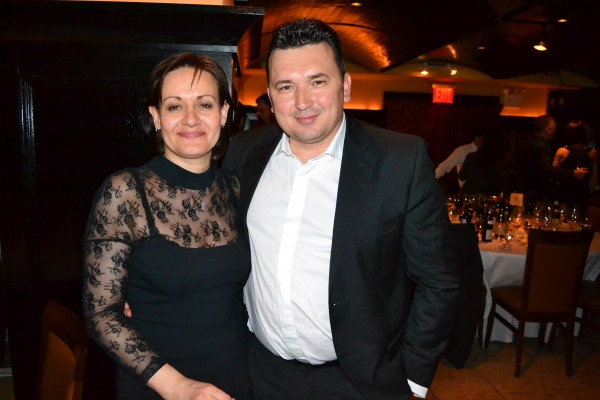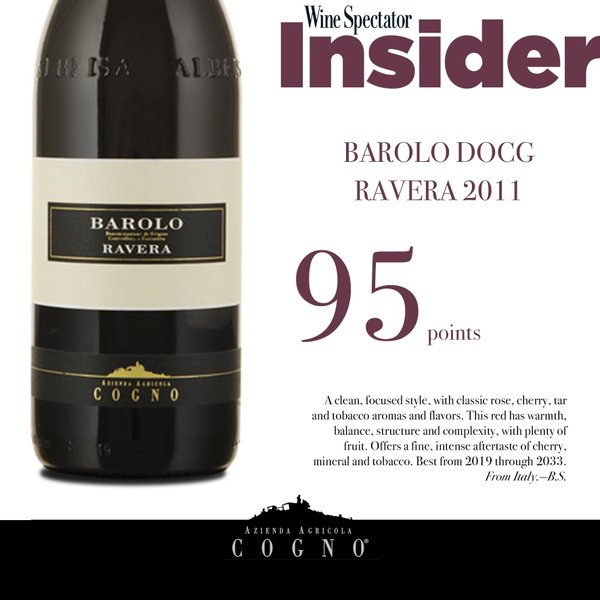Elvio Cogno Barolo Ravera 2011–2006
Posted on 8 June 2015
Nebbiolo Prima verticals! They are what makes this wine event so exciting. The opportunity to taste some of Italy’s top wines across a number of vintages is a reward for enduring 100 samples of young Nebbiolo before lunch.
One name I always look out for when the programme is sent to journalists is Elvio Cogno. It is one of the undisputed top 15 wineries in Barolo, and I have a long story with Valter and Nadia Fissore: I first visited them in 2005 before they became so famous. The range of Barolos has been extended here in the last few years but it’s the two historical bottlings that are truly exceptional: Vigna Elena (from 100% Nebbiolo Rosé, a rare lighter-skinned mutation of the grape) and Ravera.
But before we kicked off the Ravera vertical, here came a taste of Anas-cëtta 2014, Fissore’s famous white wine made from the local Nascetta grape. Elvio Cogno, together with the Daniele brothers of Le Strette (see my profile and video interview here), saved Nascetta from complete extinction in the 1990s. The variety has since picked up steam and is now bottled by 20-ish producers, but this remains the single most exciting rendition of it. And I think the 2014 could be the best vintage I’ve tasted: saline on the nose as a walk on the stormy ocean, crisp and vibrant in taste, this has superb delineation and intensity. It will drink best from 2016 on.
We then tasted the six latest Barolo Ravera vintages, 2011 through 2006. Ravera is a large single vineyard under the town of Novello (a small chunk also lies in the township of Barolo) with mostly a south-east exposure. At the top of the limestone-based vineyard at 410 meters stands the characteristic yellow Elvio Cogno house and winery. (Warning: there is also a separate vineyard called Ravera in Monforte, bottled notably by to insider’s wineries, Ferdinando Principiano and Flavio Roddolo).
For many years, Ravera di Novello was not usually considered a grand cru; it was known for appearing on the labels of a Giuseppe Rinaldi wine (the Cannubi S. Lorenzo–Ravera, now discontinued) and it really owes its current success (Vietti now also makes a cru bottling, and Paolo Scavino just bought 4 hectares at 4m€) to the efforts of Valter Fissore. This vertical fully showed the outstanding results he achieved.
Elvio Cogno Barolo Ravera 2011 – a lovely traditional Nebbiolo colour and a beguiling red fruits nose. Phenomenal palate has freshness and vibe. Tannins are fine and the sheer quality of fruit is terrific. It will take a few years for the tannins to soften but the class is obvious. This comes from 60–70-year-old vines with no less than 45 days’ skin contact and two years of large oak; around 15K bottles made. „Ravera always comes best in warm vintages,” Valter adds.
Barolo Ravera 2010 – this is quite ripe for 2010, if less immediate impact than 2011. Good definition of ripe fruit. For a vintage that elsewhere is proving to be a real pain to taste at this moment, the tannins are surprisingly soft, though with a mild stalky / chestnutty feel to them. All in all, outstanding but less complete than the 2011 and with time in the glass, trails behind the 2007 as well.
Barolo Ravera 2009 – rich and well-delineated but the hot vintage is showing in an old wood / aceto balsamico feel. Nonetheless, this is a brilliant 2009 with sap and tannin and ample freshness too. What length and juiciness!
Barolo Ravera 2008 – cooler cherry on the nose, followed by dried fruits and dried tobacco, a signature aroma for this bottling. Broad, rich, complete yet precise at all times. Yet behind so much richness, some pretty punitive tannins kick in at the end—the 2008 here was harvested as late as 20 October. Less exciting than other vintages on this showing.
Barolo Ravera 2007 – ripe and dried fruits with a bit of Nebbiolo pepper. Big chunky tannins of a different, beefier, richer nature than 2008. Lovely texture, this has real charm but I feel the latest vintages are perhaps even more complete. After the wines air in the glass, this is the best wine of the tasting after the 2011.
Barolo Ravera 2006 – this is less charming on the nose, with a hint of green. On the palate this is firm and compact with strikingly voluminous tannins. You can hope for great things when you have such „patrimonio tannico” as the Italians say; I love that expression that suggests tannins are a heritage on which you draw over the years. The best showing of the cooler vintages today, but I would not open a 2006 yet.
Disclosure: my trip to Piedmont including flights, accommodation, and wine tasting programme are sponsored by Albeisa, the local wineries’ association.




